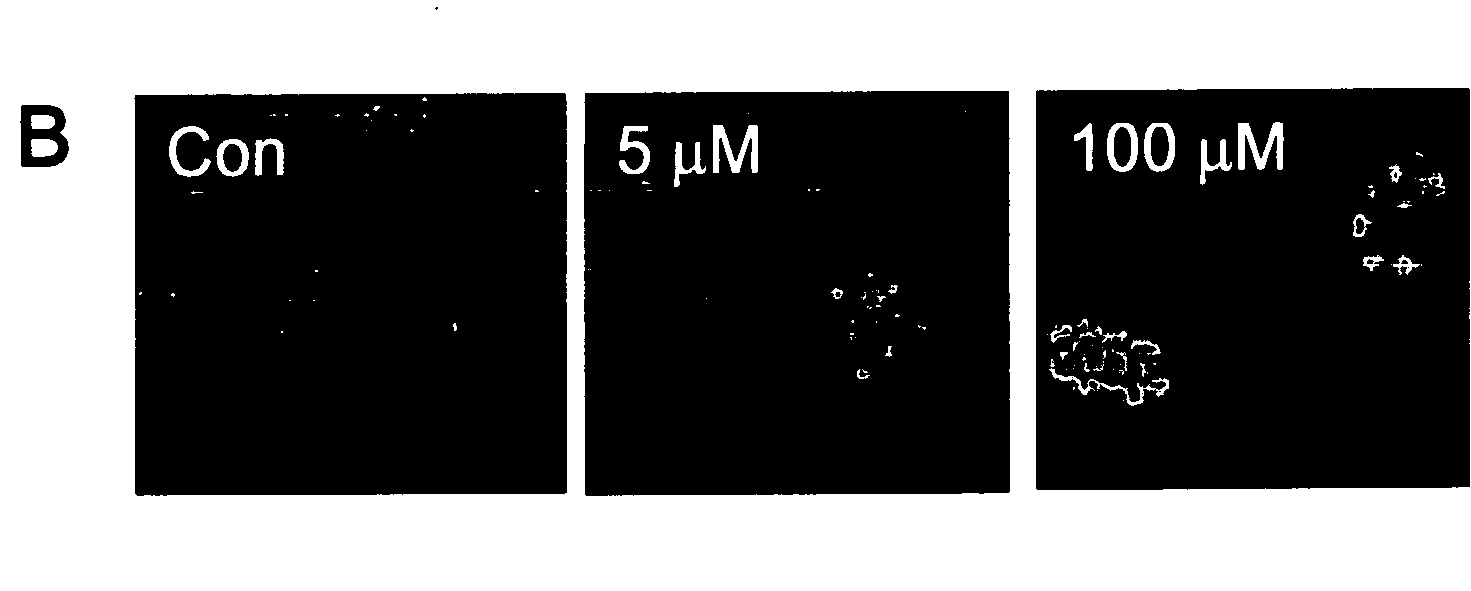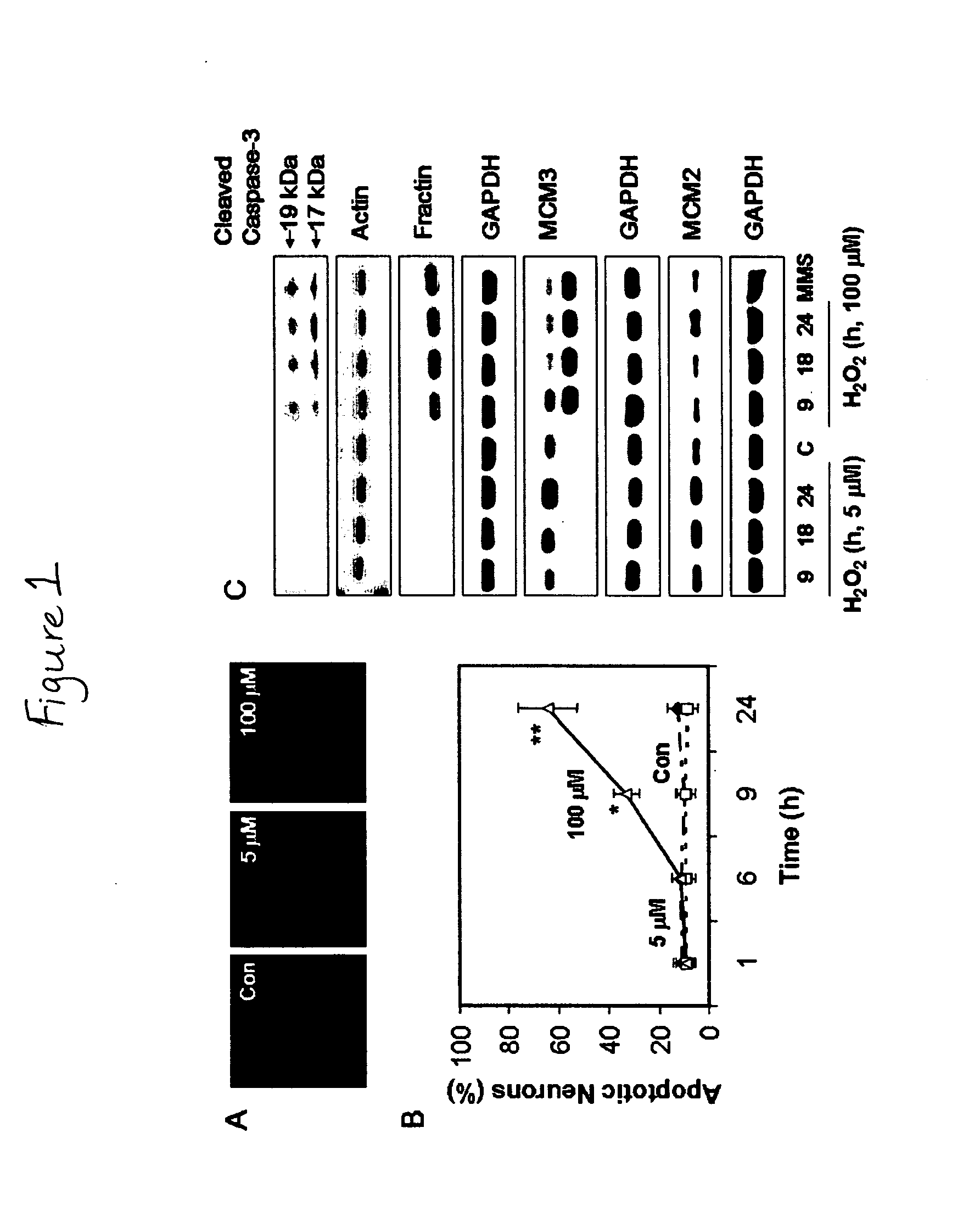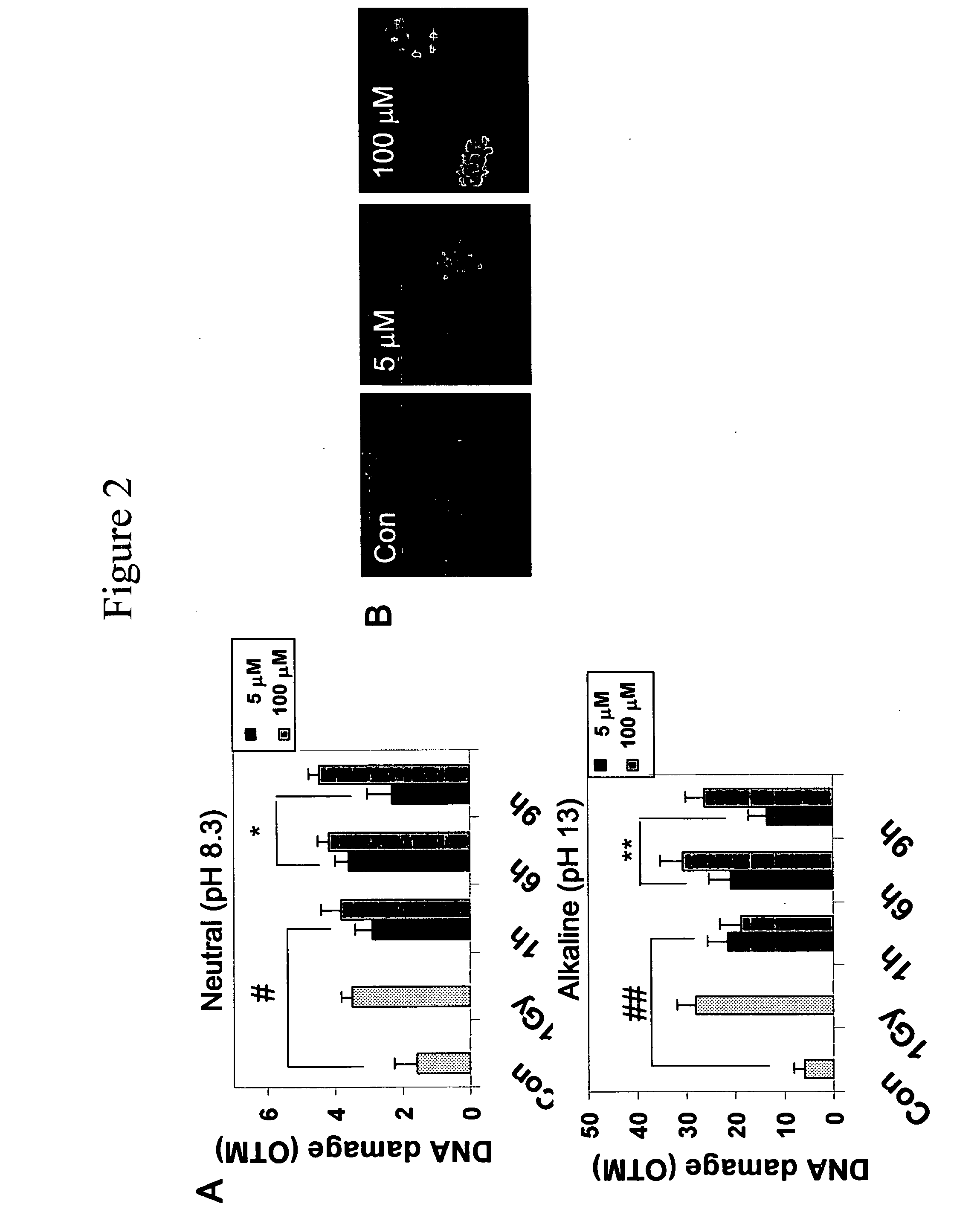Methods of neuroprotection by cyclin-dependent kinase inhibition
a cyclin-dependent kinase and neuroprotective technology, applied in the field of suppressing neuronal death, to achieve the effect of preventing neuronal degeneration and slowing down neuronal loss
- Summary
- Abstract
- Description
- Claims
- Application Information
AI Technical Summary
Benefits of technology
Problems solved by technology
Method used
Image
Examples
example
Cortical Cell Cultures and Experimental Treatments
[0060]All experiments involving the use of animals were approved by the IACUC at the Georgetown University Medical Center, Washington, D.C. Primary cortical cell cultures were established from E18 Sprague-Dawley rats obtained from Jackson Laboratories.
[0061]The cells were plated according to procedures described earlier (Kruman, I. I., et al. 2004. Neuron. 41:549-561). Following dissociation by mild trypsinization and trituration, cells were seeded onto plastic dishes or chamber slides precoated with 0.025 μg / ml poly-L-lysine, at a density of 1.3×103 neurons / mm2 in Neurobasal medium containing B-27 supplement, 1 mM HEPES, 2 mM glutamate and 0.001% gentamycin sulfate; fresh medium was replaced after 30 minutes.
[0062]All of the experiments were performed with 4-day-old cultures, a time during which ˜3% of the MAP-2-positive cells were in S phase (Kiruman, I. I., et al. 2004. Neuron. 41:549-561). A fresh stock of 1 mM hydrogen peroxide ...
experimental conclusions
[0091]In this Example, evidence is provided that activation of the cell cycle machinery contributes to DNA damage-initiated neuronal apoptosis. To our knowledge, this study is the first to demonstrate that G1 cell cycle components are involved in DNA damage-initiated neuronal apoptosis.
[0092]In mitotic cells, the cell cycle machinery is a major contributor to the DNA damage response, a complex defense mechanism whose function is to eliminate the damaged DNA (DNA repair) or, alternatively, to eliminate the damaged cells via apoptosis (Bernstein. C., et al. 2002. Mutat Res. 511:145-178). The latter mechanism ensures that irreparable DNA modifications are not passed on to the progeny of damaged cells. Both DNA repair and apoptosis are coordinated with progression through the cell division cycle, together acting to preserve genomic integrity (Rhind, N. and P. Russell. 2000. Curr Biol. 10:R908-R911). Thus, in proliferating cells, an important role of the DNA damage response is to activat...
PUM
| Property | Measurement | Unit |
|---|---|---|
| Energy | aaaaa | aaaaa |
Abstract
Description
Claims
Application Information
 Login to View More
Login to View More - R&D
- Intellectual Property
- Life Sciences
- Materials
- Tech Scout
- Unparalleled Data Quality
- Higher Quality Content
- 60% Fewer Hallucinations
Browse by: Latest US Patents, China's latest patents, Technical Efficacy Thesaurus, Application Domain, Technology Topic, Popular Technical Reports.
© 2025 PatSnap. All rights reserved.Legal|Privacy policy|Modern Slavery Act Transparency Statement|Sitemap|About US| Contact US: help@patsnap.com



